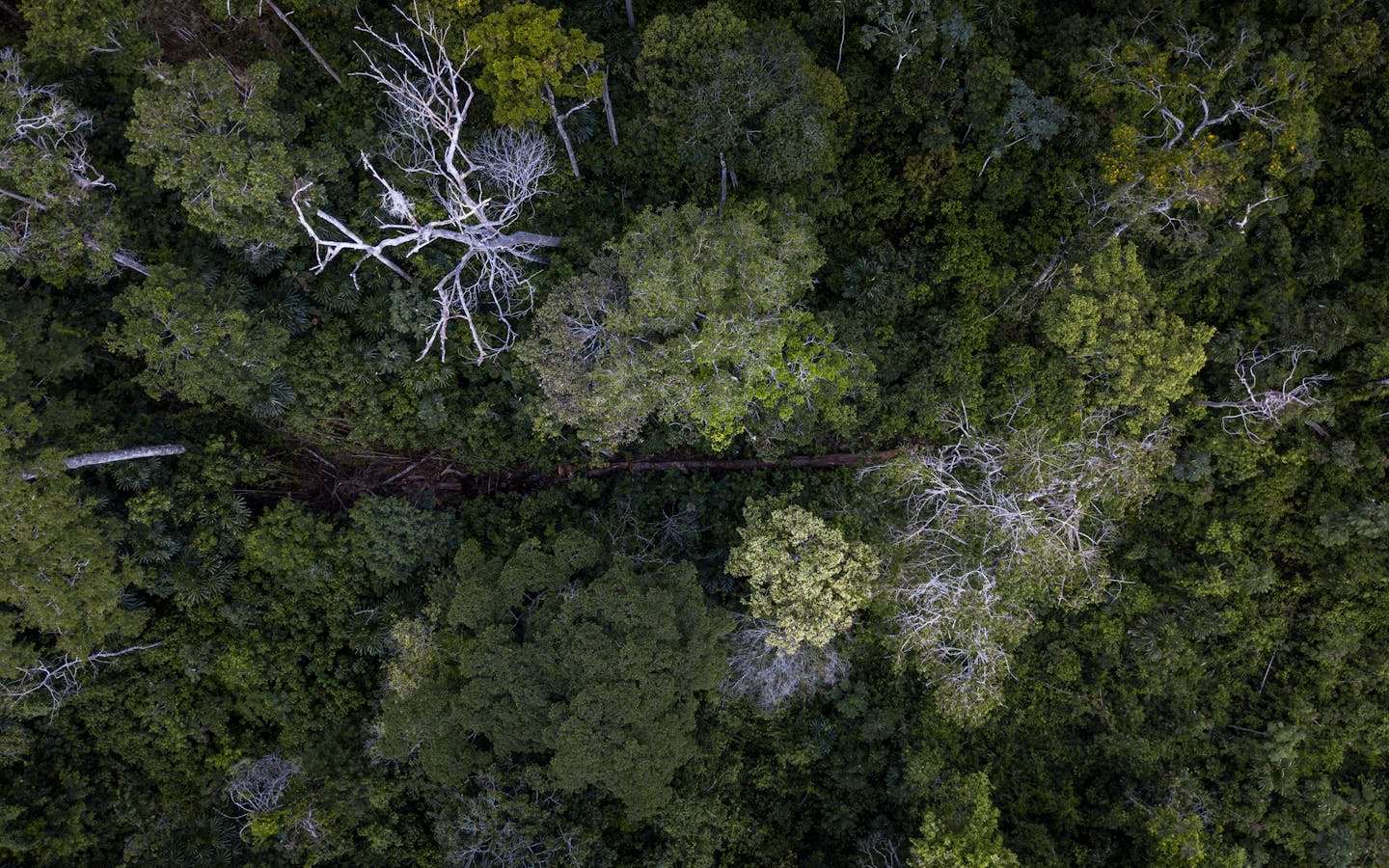“Irrecoverable carbon” refers to the vast stores of carbon in nature that are vulnerable to release from human activity and, if lost, could not be restored by 2050 — when the world must reach net-zero emissions to avoid the worst impacts of climate change.
-----
UPDATE: the Finance Lab for Irrecoverable Carbon (FLIC) project aims to develop new ideas for financing the Earth’s irrecoverable carbon ecosystems. Learn More.
To avoid the catastrophic consequences of climate breakdown, there are certain places that humanity simply cannot afford to destroy. These ecosystems contain more than 139 billion metric tons of “irrecoverable carbon,” most of which is stored in mangroves, peatlands, old-growth forests and marshes.
Conservational International scientists led a team of globally renowned experts to determine where these carbon stocks are, whether they are threatened by human activities and how quickly the stocks could be recovered if lost — creating a global map of irrecoverable carbon in Earth’s ecosystems.
Informed by this pioneering research, Conservation International is undertaking an ambitious initiative to protect 4 million square kilometers (more than 1.5 million square miles) of ecosystems — an area about the size of India and Bolivia combined — containing high amounts of irrecoverable carbon and biodiversity.
Of the world's irrecoverable carbon:
Irrecoverable carbon is:
Tropical rainforests store 30 billion metric tons of irrecoverable carbon globally. They can be found across South America, Africa and Asia. In this ecosystem, the majority of irrecoverable carbon is aboveground in the trees and foliage, with a smaller amount in the soil.
In Peru, the Amazon rainforest is a key irrecoverable carbon ecosystem.
At more than 210 metric tons per hectare, on average, these coastal forests are a powerhouse of carbon storage, with the highest density irrecoverable carbon of any ecosystem. Mangroves also protect coastlines from storm damage and serve as nurseries for many marine species. Even with all these benefits, mangroves are highly threatened by aquaculture — mainly shrimp ponds — and coastal development.
In the Philippines, mangroves are an important irrecoverable carbon ecosystem and serve as the first line of defense against typhoons.
Peat is carbon-rich soil containing partially decomposed vegetation. It forms in wetland environments where water slows the decaying process, locking up carbon gradually over centuries or millennia. Boreal peatlands contain at least 19 billion metric tons of irrecoverable carbon globally, while tropical peatlands contain nearly 16 billion metric tons.
The Congo Basin, including the Republic of the Congo and Democratic Republic of the Congo, contain some of the most extensive peatlands in the world.
Temperate rainforests are unique ecosystems that combines all the trappings of a rainforest — mist, daily rainfall, hanging vegetation — with temperate species. They can be found in the Pacific Northwest of North America, the Valdivian forests of Patagonia, and Southeast Australia, and they contain some of the largest tree species in the world.
In the United States, the remaining temperate rainforest stretches from Oregon through Canada to southeast Alaska.
The research
We mapped irrecoverable carbon globally using cloud computing of newly released datasets derived from remotely sensed imagery. We found that the irrecoverable carbon in nature is equivalent to 15 years’ worth of fossil fuel emissions. These lands must be proactively conserved to prevent loss due to direct land-use change, such as agriculture and aquaculture, and climate change impacts, such as increased forest fires, droughts and species shifts.
Overlaying irrecoverable carbon with biodiversity data reveals "doubly irreplaceable" areas, mainly in the tropics. Less than 14% of Earth’s land area contains 75% of its irrecoverable carbon and provides habitat for 91% of its terrestrial vertebrate species.
Interact with this map to explore the data:
Highlight countries
Explore deeper
Explore overlap with current protected areas, recent loss and more on the Resilience Atlas
Explore overlap with biodiversity by country or custom boundaries on the Shiny App
Finance Lab for Irrecoverable Carbon
The Finance Lab for Irrecoverable Carbon (FLIC) project aims to source and develop new ideas for financing the Earth’s irrecoverable carbon ecosystems – the places we must protect to avoid climate catastrophe. We developed five financial blueprints (concept notes) between 2022-2024. These documents are publicly available, and we hope they spur further development and implementation of the ideas.
- Surf Conservation Facility (Available in Español and English)
- African Forests Facility (Available in English)
- Parametric insurance for mangroves in Mozambique (Available in English)
- Irrecoverable Carbon Impact Bond in Karukinka Natural Park, Chile (Available in Español and English)
- Wild Harvest Fund (Available in English and Português)
Resources
Citations
- Noon, M.N., Goldstein, A., Ledezma, J.C., Roehrdanz, P. R., Cook-Patton, S.C., Spawn-Lee, S.A., Wright, T.M., Gonzalez-Roglich, M., Hole, D.G., Rockström, J., and Turner, W.R. (2021). Mapping the irrecoverable carbon in Earth's ecosystems. Nature Sustainability. doi: 10.1038/s41893-021-00803-6.
- Goldstein, A., Noon, M.N., Ledezma, J.C., Roehrdanz, P. R., Raghav, S., McGreevey, M., Stone, C., Shrestha, S., Golden Kroner, R., Hole, D.G., and Turner, W.R. Irrecoverable Carbon: The places we must protect to avert climate catastrophe. (c) Conservation International, 2021. doi: 10.5281/zenodo.570606.
- Goldstein, A., Turner, W.R., Spawn, S.A., Anderson-Teixeira, K.J., Cook-Patton, S., Fargione, J., Gibbs, H.K., Griscom, B., Hewson, J.H., Howard, J.F., Page, S., Koh, L.P., Rockström, J., Sanderman, J., and Hole, D.G. (2020). Protecting irrecoverable carbon in Earth's ecosystems. Nature Climate Change. 10, 287-295. doi: 10.1038/s41558-020-0738-8.
To stop climate catastrophe, there are ecosystems that store vast amounts of carbon that we can't afford to destroy. The good news is that, thanks to Conservation International research, we now know where Earth's living carbon reserves can be found — and it's largely within our control to protect them.
Groundbreaking Conservation International research pinpoints the places on Earth that humanity must protect to avoid a climate catastrophe. And knowing which areas contain the greatest irrecoverable carbon stores can help governments focus critical conservation efforts.

